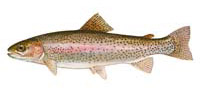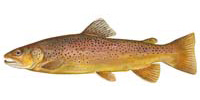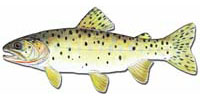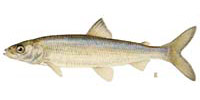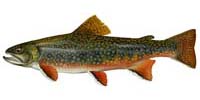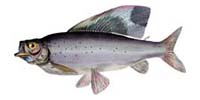For an extremely beautiful fishing location, look no further than the Gallatin River. This blue ribbon river has gorgeous scenery and crystal clear water – not to mention plenty of trout. The trout here don’t get as large as some of the other Montana Rivers, but the fish are so plentiful that the catch rate tends to be really high. Most of the Gallatin River is designated for wade fishing only; however, that doesn’t pertain to the lower portion of the river. Fishermen sometimes head out on the river on small rafts so they can float from one location to another, then jump off and wade into the water to fish.Fishing here in the spring can be tricky and is greatly influenced by changes in the weather. The best time to go in the spring is on sunny days in March from 11 a.m. to 3 p.m. Summer provides the best fishing on Gallatin River – especially right after the spring run-off. The fall offers some decent fishing, and it really slows down in the winter.
Gallatin River Sections
Gallatin River has several sections. Each section provides unique fishing opportunities and challenges.
Yellowstone Park Border to Spanish Creek
This section of the Gallatin river from Yellowstone Park Border to Spanish Creek is referred to locally as Gallatin Canyon. Strong mayfly hatches along this section of the river during mid-spring or post run-off Pale Morning Duns hatches typically provide for excellent opportunities to catch hungry rainbow trout. This section of Gallatin river is busiest in July and August. Nymphing is very popular during the summer months. Every few years, a surprise visit from Spruce Moths can bring the trout to the surface from late July through mid-August for a feeding frenzy.
Spanish Creek to Manhattan
Beyond Spanish Creek, the river changes character, braiding and forming riffles, islands, and long deep pools. The trout increase in size and numbers. The prominent insects here are midges, caddis, tricos, mayflies and terrestrials. Access is fairly good. Every eight miles or so there are bridges for fishing or fishing access sites.
Manhattan to Missouri River
The lower Gallatin River forms as the East and West Gallatin branches join at the Gallatin forks near Manhattan. This section of the river ends at the confluence of the Missouri River at Three Forks, Montana. The fish count is lower on this stretch of the Gallatin river than it is upstream, but the fish tend to be larger. Using crayfish, sculpin and streamers to target hungry fish typically provide good results. Little golden stones, midges, baetis nymphs, girdle bugs, attractor nymphs, eggs and worms all work well on sunny springtime days. Float fishing is permitted in the last twelve miles of this stretch of the Gallatin.
Practice caution when floating Gallatin river from late May to late June, as the whitewater can get intense. Once summer officially begins, the fishing season really picks up. Cast rogue stone dries around the boulders and eddies. The flies are everywhere and can gather over the water for miles. Attractor dries work well once the hatches slow down around mid-July.
There is also a spot in the Gallatin river that offers good winter fishing. Along Highway 191, just downstream of the Big Sky junction, several springs join and warm the water and keep it from freezing. The fish love to gather here. This spot is well known among locals, so the fishing pressure can be high some years.
Fishing Seasons
There are five distinct fishing seasons for Gallatin river. Spring (March-May) fishing on Gallatin can be hit and miss. Warming sunny days between 11am and 3pm, fishing with girdle bugs, midges, baetis nymphs, eggs, attractor nymphs, and eggs usually produces the best results. Run off (late May-June) can provide lackluster results due to fast moving water. When fishing during the run off, fish large stonefly nymphs and San Juan worms near boulders and side eddies. Summer (July-September) is the best time to fish Gallatin river. Lower water levels and fly hatches drive trout to feed heavily. Fishing with 68 Rogue Stone dry flies around boulders an eddies typically produce good results. Fish the entire river using an assortment of attractor nymphs, caddis, and San Juan worms. Attractors dries work well as hatches begin to subside during mid July.


